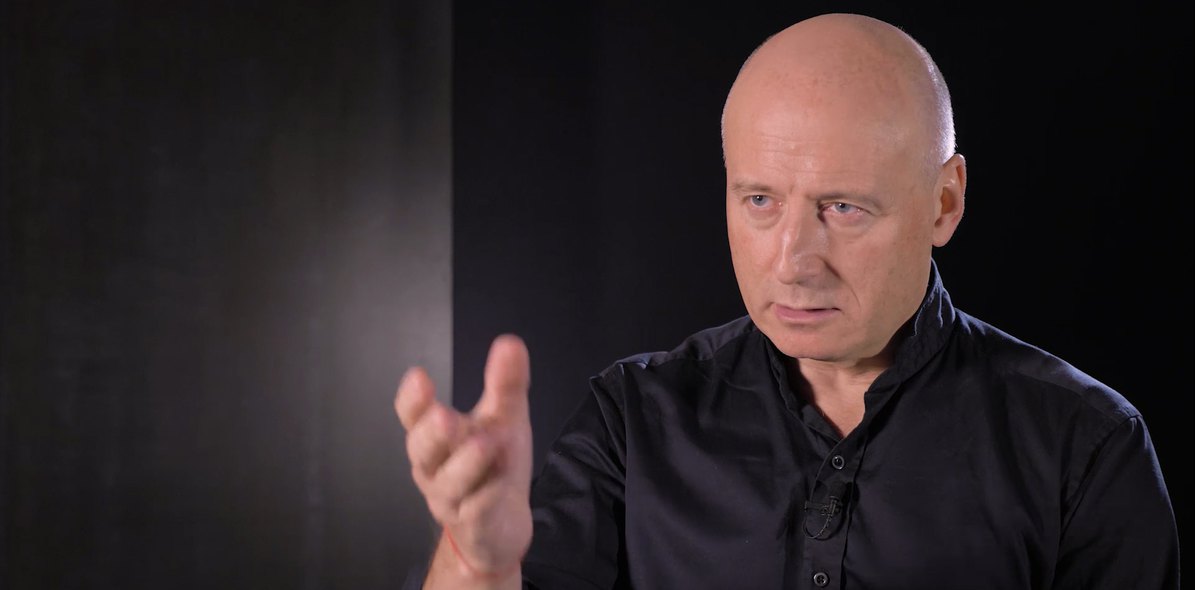
the art of conducting | Paavo Järvi
How do you experience the general change away from the image of the conductor as autocrat?
The change from the autocratic conductor to the modern conductor has been a very gradual change because it changes very much with the way the world changes. I mean, if you look at the world 20 years ago, and today, there are drastic differences in the acceptance of certain social norms and certain behaviors. If you look at even the advent of how many female conductors we have today – 20 years ago, you were lucky to find one or two.
I think the role of the conductor has always been the same. The conductor is basically a teacher, and a teacher who then also becomes a performer during the concert. But with even the greatest orchestras, there is a certain process of explaining and teaching the piece, even to an orchestra that knows the piece extremely well. [On the greatest level of orchestras?], one doesn't necessarily need a kind of a hardcore disciplinarian anymore, somebody who says «well this is too loud, this is too this or too that». There is a certain level where orchestras are just so good already that a lot of the logistics are taken care of. There are still some that you need to work on but that's minimal. So the interesting part of conducting really is a conceptual part. It's the architectural part, it's how you build the piece, what are the steps you need to take in order to reach the one big culmination in the movement or in the piece. This is something that hasn't really changed, this is what really the conductor's job is.
Do you discuss the role of the conductor with your father, who is also a conductor?
Of course, since I was a small boy. The luck basically is to be born in a family where you have a conductor. In our case, we have four conductors. There are certain little secrets or certain little inside information, inside knowledge and these are the things that are very closely guarded, people don't easily share those things. And when your father is a conductor, he will share these things with you and in fact he will advise you to look out for certain things that might become issues or problems, and little traps that are built into every piece that an inexperienced conductor will just fall into. So in that way, of course, it has been an incredible advantage, from a point of view of repertoire as well, because the repertoire is so vast for a conductor, there is 400 years of music and you realize that one lifetime is simply not enough. But if you start everything from zero, then three lifetimes are not enough, so sometimes it's helpful if somebody gives you a hint in which direction to go to.
Can you share with us some of the insights he passed on to you?
Well, I mean one needs to be very specific about it and no, it's not the kind of thing that one necessarily wants to share with the general audience, but ... even from a technical point of view, you know, if you look at a lot of very famous conductors, they don't have technique and it may sound funny, but they just don't know how to drive that car called orchestra. They know how to stop and explain something, but the problem is that in concert, you can't stop and explain. In concert, you have to show, there has to be a language that is so organic and so obvious to the musicians that they simply understand from your gestures, from your facial expressions, from the technical side of conducting exactly which way to go. And then anyway, in rehearsals, you need to stop and explain quite a bit but there is such a thing as technique and already these little hints come in very handy when you have a father who actually has a very strong idea of how the technique should work.
You are chief conductor of various orchestras across the world. Do you communicate differently?
For example, I always find that a very direct communication ... I need to see people's eyes, I can't just say «all of you do something» and not look at them, you know, there needs to be a very clear visual communication for me. If I see a chamber ensemble, a quartet for example, they're always very, very visually and actively looking at each other and trying to somehow sit as close as possible so that they hear each other breathing and so on. If you go to Japan [ed. Järvi is the Chief Conductor of the NHK Symphony Orchestra Tokyo], you don't see that so much because it is not in the culture, and in fact it's considered, from old times, already quite rude. But in an orchestra, I had to realize at one point that the fact that somebody's not looking doesn't mean that they don't care, that they are uninterested. No, it's because they're brought up not to stare at you because in that particular culture this is not seen as the right thing to do. I always say «look, here we have to have contact, we need to connect here» and they understand this. The younger generation of musicians have no problem in just looking at you. The older generation of musicians, there you can see that they see you, but they don't look at you directly. Now that's just one of those small examples of how the cultures are different. If you go to France and people don't look at you, it's because they just don't care and that's also a cultural thing. You have to know your audience and you have to work with what's in front you.





